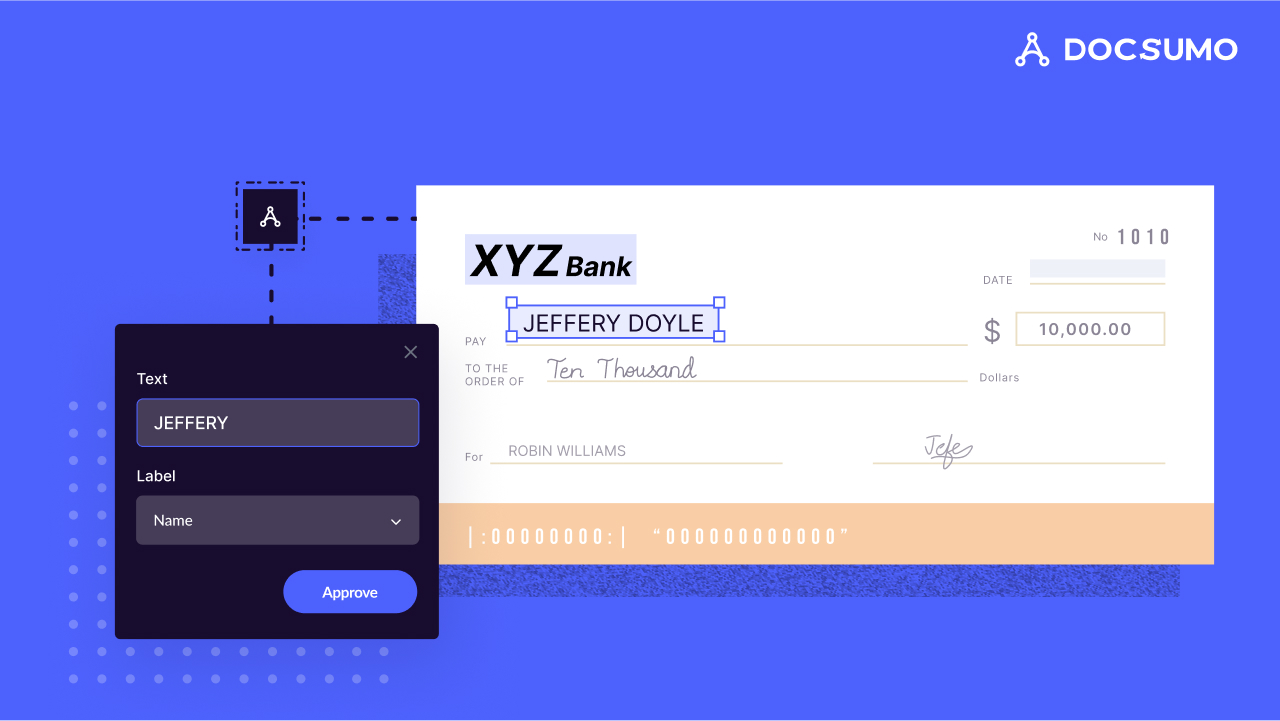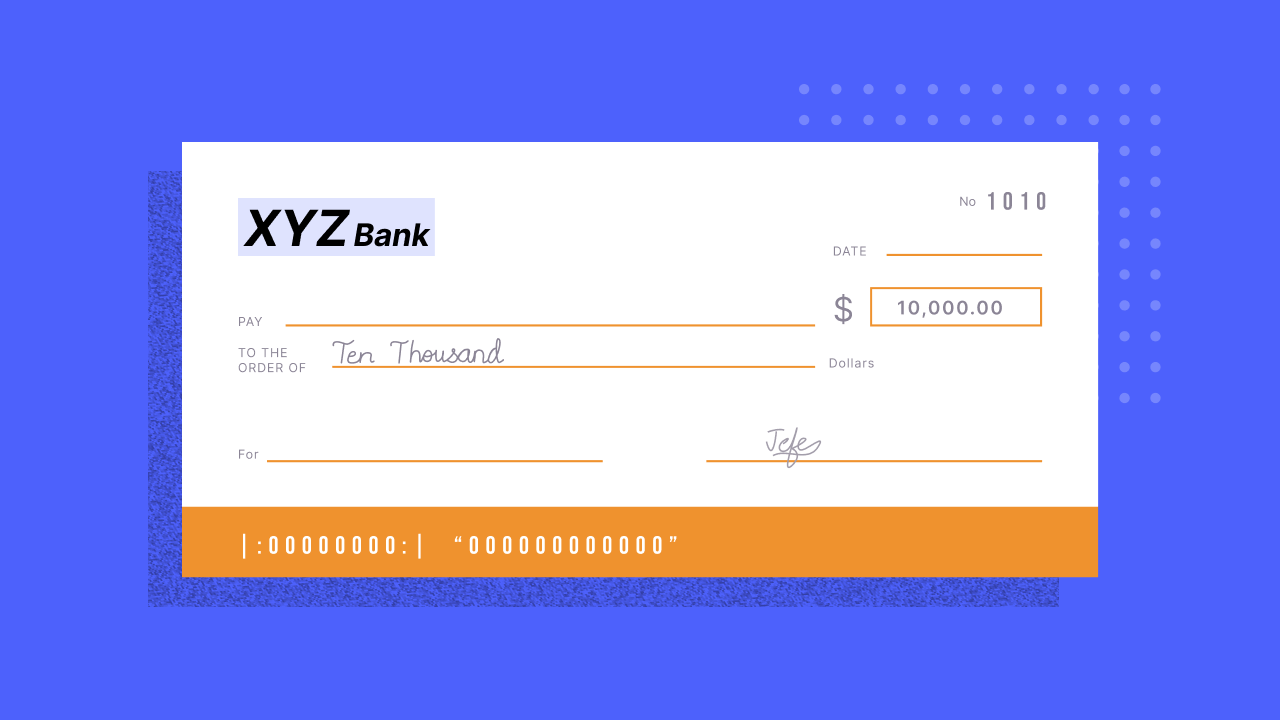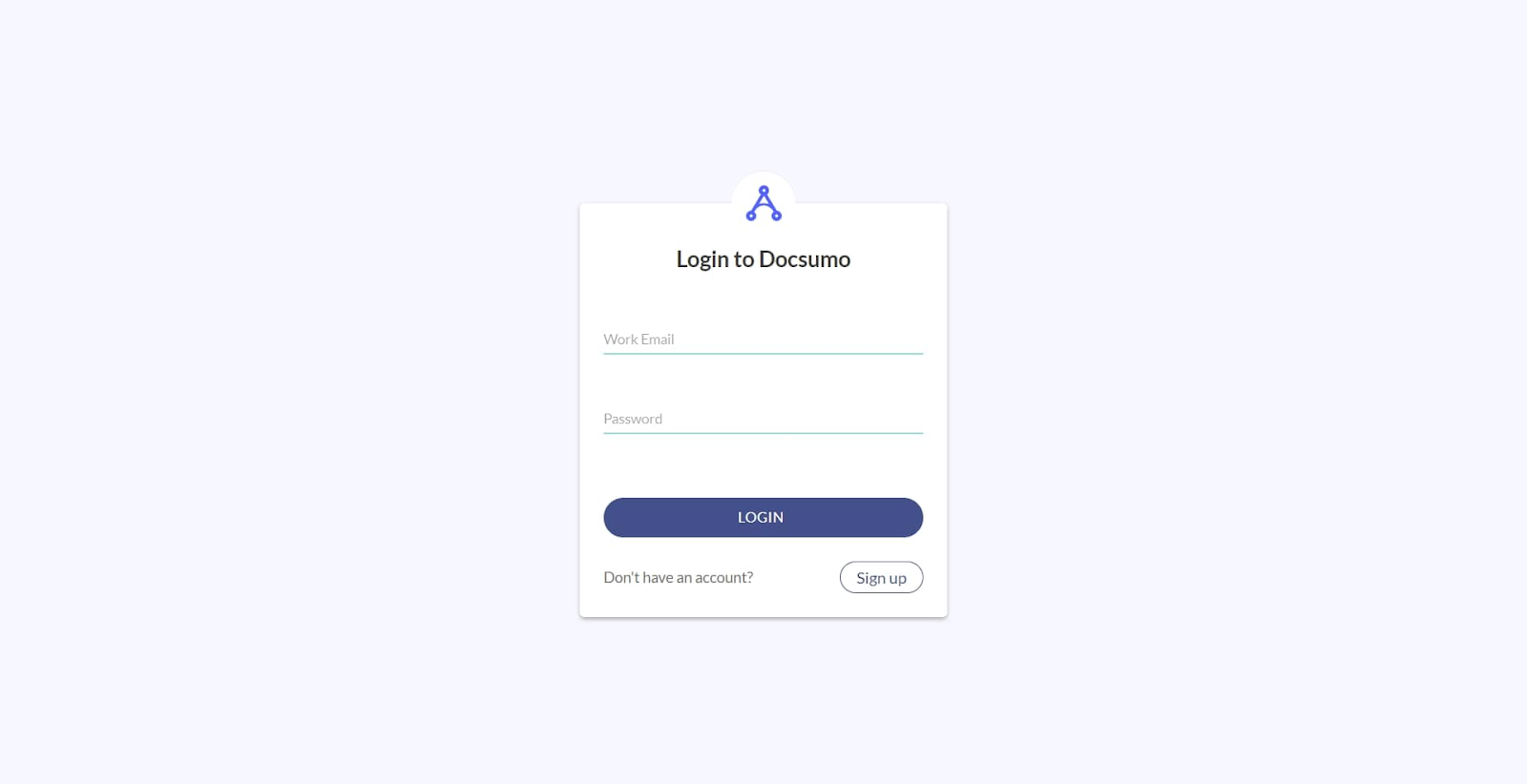Suggested
Best Data Extraction Services You Must Know in 2024

Extracting data from bank checks has always been a slow and error-filled task. Manual data entry, a prevalent method in this process, often leads to significant time consumption and increased error rates, which can impact overall productivity and financial accuracy.
This is a common issue for many professionals and businesses dealing with financial transactions. But now, things are changing. New approaches, like Optical Character Recognition (OCR) and Machine Learning (ML), are making getting information from checks faster and more accurate.
It means fewer mistakes, faster transactions, and better service. In this blog post, we'll explore how these technologies work to extract data from bank checks. Also, we will discuss the benefits and new methods of solving this age-old problem. Let’s begin.
Data extraction from bank checks automatically recognizes and captures relevant data from bank check images or scanned documents. This includes details like the account number, payee information, the amount of money the check is for, and the date it was issued.
The extracted data can be used for various purposes, such as processing deposits, verifying transactions, and auditing.
Here’s a sample example of a bank check:

OCR technology detects and extracts text from check images, including handwritten text like the payee's name and amount. Advanced OCR can handle variations in handwriting styles. Tools that use OCR (Optical Character Recognition) can scan checks and capture data automatically.
Many bank check data extraction solutions combine OCR, ICR, and computer vision models to capture all relevant data from checks accurately. ICR is a specialized form of OCR designed to read machine-printed text like the MICR line containing routing and account numbers.
Computer vision uses object detection to locate and extract specific fields like signatures or amounts based on their visual characteristics. This combination makes data extraction quicker, more accurate, and more efficient than the old-school manual method.
Here’s a breakdown of critical data points extracted from bank checks and why they are essential:
This includes the names and details of the person or company writing the check (issuer) and the person (or entity) receiving the money (recipient). Understanding who is involved in the transaction is fundamental for tracking and reporting financial activities.
It helps verify the transactions' authenticity and is essential for auditing purposes.
The amount tells you how much money moves from one party to another. This information is vital for maintaining accurate financial records and managing budgets. The date on the check is also critical, as it helps you understand when the transaction was authorized. This information can be essential for post-dated checks and financial planning.
Every check has a unique number that helps track and manage payments. It's crucial in reconciling bank statements and ensuring that all transactions are accounted for. In case of issues or disputes, the check number makes it easier to trace the specific transaction.
This contains the bank's routing number, the account number, and the check number written in special magnetic ink. This line is what automated systems read to process checks. The data here ensures the money goes to the right place and comes from the correct account. It’s also key in fraud prevention, as alterations can be more easily detected.
The signature is the issuer’s transaction authorization. The position of the signature and other elements on the check can also be relevant. This is particularly important in identifying and preventing fraud, as irregularities may suggest tampering.
Here’s the importance of extracting data from bank checks and how it can significantly impact various facets of financial operations:
Financial institutions can speed up the processing of checks. This leads to quicker transaction completions and reduces the backlog of pending transactions. Faster processing improves overall operational efficiency and allows banks to allocate resources more effectively.
Efficient data extraction identifies discrepancies or anomalies in checks. Banks can quickly spot any signs of fraud by automatically checking account numbers, amounts, and signatures. This active step in preventing fraud helps keep both the bank and customer assets safe.
Customers expect quick and accurate transactions. By streamlining the data extraction bank check process, banks can provide faster service. This increases customer satisfaction and loyalty, as clients feel their time and money are valued.
Automation enables financial institutions to reduce operational costs associated with labor and error correction. This cost-saving can then be passed on to customers through lower fees or invested back into the business to improve services.
Financial institutions must follow strict rules about processing transactions and keeping records. Efficient data extraction ensures that all transactions are recorded correctly and can be found easily, helping them comply with laws and regulations.
Extracting data from a bank check can present several common challenges that hinder the process. These challenges include:
Bank checks don't have a universal design, which can cause inaccuracies in data capture. The solution involves employing data extraction tools that can learn and adjust to different check layouts and designs.
Clear and high-quality check images are crucial for accurately extracting data from a bank check. Issues like shadows, low resolution, and damage to the check can lower image quality. High-resolution scanners and image processing software that enhance images before extracting data are used to improve this.
Deciphering handwritten text can be challenging, often resulting in errors or incomplete data extraction. Specialized OCR technologies designed to recognize various handwriting styles are crucial to address this issue.
Incorporating new data extraction solutions into existing financial systems can be complicated and time-consuming. The key to a smooth integration is selecting data extraction software with flexible and compatible integration options.
Bank checks contain sensitive information that requires high levels of security to protect against breaches and unauthorized access. Financial institutions must adopt data extraction solutions with stringent security protocols, such as data encryption and secure user authentication.
Below is a checklist for preparing bank checks that can help streamline the data extraction process:
This can involve aligning with standard layouts, fonts, and positioning for critical elements like date, amount, and signature. Standardization reduces the variability the extraction system needs to handle, improving accuracy.
Before digitization, ensure checks are free from physical defects and are suitable for scanning. Use scanners that can handle high resolutions to capture clear images. After scanning, check the image quality to spot problems like blurriness or missing parts. This ensures only clear, complete photos go to the data extraction step.
Invest in advanced Optical Character Recognition (OCR) technologies. These systems are better at handling various fonts and styles, including handwritten texts. Choosing OCR technology designed explicitly for financial documents can significantly enhance data extraction accuracy.
Apply image pre-processing techniques to enhance readability before extraction. This includes adjusting brightness and contrast, correcting skew, and removing background noise. Clean, well-adjusted images reduce errors in the extraction process.
Data extraction systems equipped with continuous learning algorithms improve over time as they process more checks. This continual improvement cycle leads to higher accuracy and efficiency in data extraction.
Here’s a step-by-step guide to efficiently extract data from bank checks using Docsumo:

Begin by creating an account on the Docsumo platform. This access opens up a range of features perfect for handling bank checks. Head to the Docsumo website and select “Start free 14-day trial” to get started.

With your account set up, you can start uploading your bank checks into the Docsumo system. You can click or drag and drop files directly from your computer or email. Docsumo is compatible with both image files and PDF formats.

After uploading, let Docsumo use its advanced deep-learning algorithms to identify and assign accurate data types to the various fields of your bank checks. Check the identified fields for accuracy. Docsumo will then begin the extraction process and highlight any areas needing your attention.
Docsumo offers options to customize the extraction settings according to your specific requirements. It enhances the process's flexibility and ensures the data extracted matches your needs accurately.

Once customization is complete, scrutinize the extracted data and Docsumo’s recommendations. Adjust if necessary and confirm to ensure the final extracted information is correct and applicable.

You can now download the extracted data in different formats like CSV, Excel, or JSON, depending on your need. Choose Excel for straightforward analysis or JSON for easy integration with other systems.
The last step is to incorporate this extracted data into your current workflows. This integration facilitates the smooth use and analysis of the data in line with your business operations.
Here are some best practices for post-extraction data management to ensure accuracy, security, and compliance:
Once data is extracted, it must be validated to ensure accuracy. This can include cross-referencing extracted details with other documents or databases and using automated validation tools. Accurate data helps make reliable financial decisions and reduces the risk of errors.
Financial data is sensitive and must be stored securely to prevent breaches and unauthorized access. Use encrypted storage solutions and ensure that data is transmitted over secure channels. Also, regularly update your security protocols to combat emerging threats.
Regular audits of stored data help identify and rectify any inconsistencies, errors, or signs of tampering. Audits also ensure compliance with financial regulations and standards and keep operations transparent and accountable.
The exported extracted data should seamlessly integrate with existing financial systems for smooth operations. Ensure compatibility and establish a smooth workflow from data extraction to application, which helps reduce manual work and mistakes.
Implement strict access controls to ensure only authorized personnel can view or modify the extracted data. Review access rights regularly and comply with relevant regulations to protect customer privacy and maintain data integrity.
In this article, we've examined the big benefits of efficiently extracting data from bank checks. We've learned how this method smooths financial transactions, cuts mistakes, and saves time and resources. Banks can use smart tech like OCR and learning algorithms to handle data better. This also makes customers happier and helps them follow the rules.
Docsumo emerges as the right solution for this challenge. It simplifies the extraction process and ensures compatibility with existing financial systems.
Start transforming your data extraction process with Docsumo today.
A. Yes, it’s possible. However, the accuracy can vary depending on the clarity of the handwriting and the sophistication of the OCR system. Advanced OCR systems equipped with machine learning can more effectively decipher various handwriting styles.
A. Banks use encryption, secure connections, and multi-factor authentication. They also follow banking rules and data protection standards, regularly update their security, and conduct audits to prevent unauthorized access and data breaches.
A. Common challenges include check format variability, poor image quality, and handwriting variability. You can reduce these by using advanced OCR and image processing, standardizing check formats where possible, and scanning properly.